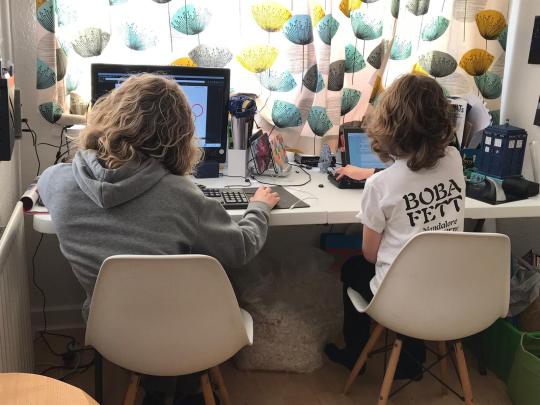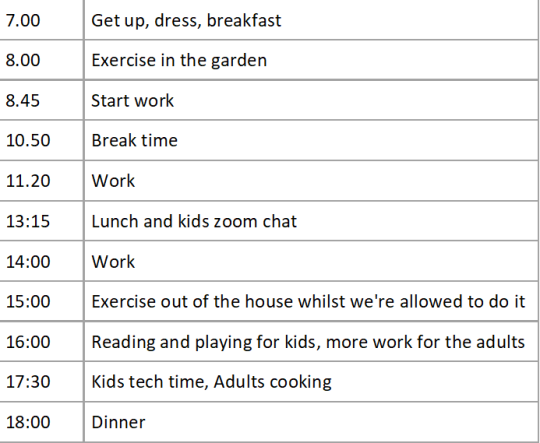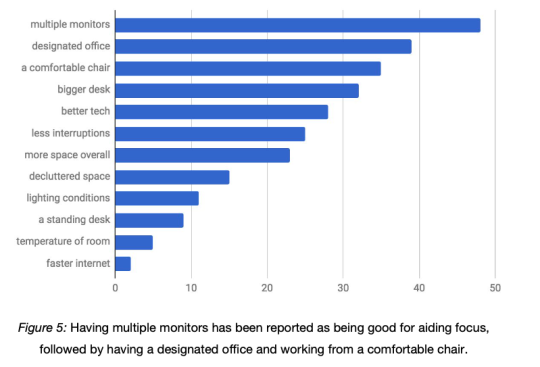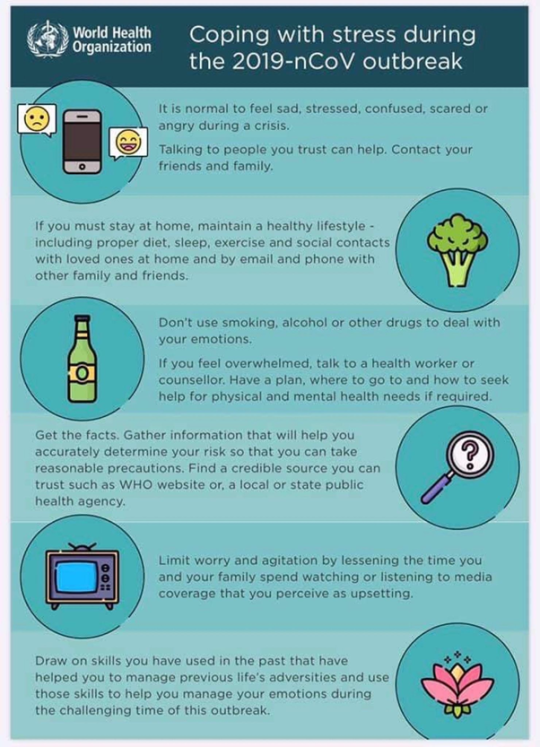Home » Articles posted by drannalcox (Page 5)
Author Archives: drannalcox
You are suddenly part of a virtual team.
Reblogged from an article by Evelyn Tan describing our work on using games to support the creation of digital teams
We were pushed into the age of fully remote work as abruptly as COVID-19 exploded across the globe. We are all suddenly part of a virtual team. We had no idea this was coming. And to be honest, it doesn’t seem like remote work is going to go away after things go back to “normal”.
Organisations are still scrambling to figure out how to deal with the ramifications of virtual work.
On the other hand, managers and team leaders are trying to figure out how to best keep their teams afloat.
But here’s some good news: Research on virtual teams — the challenges they face and how to make them effective — has been around since the Internet became a thing.
In this article, I highlight some of the most pressing challenges that you are going to face (or admittedly, have already faced) now that you are part of a virtual team. These challenges are primarily related to team processes — how do we get things done. I will also highlight some actionable solutions, based on scientific literature.
This article is meant for teams who are clear on their purpose, goals and roles but are struggling to set the right processes in place to achieve them. Without the former, the latter won’t get you anywhere.
Fun fact. Virtual work or remote work is also known as ‘telecommuting’, to refer to work where commuting time is reduced.
Problem 1: You can’t monitor your team. Trust is essential.
An effective virtual team requires a lot of trust because there is an increased sense of uncertainty. Since you cannot see people physically, you cannot monitor them like you previously could when co-located. If you micromanage, you will be exhausted, your colleague will be annoyed, and everyone becomes less productive. You need to trust that everyone has the team’s best interest in mind.
I like this definition of trust by Wilson, Straus and McEvily (2006, p.3)
Trust is the confident positive expectations about the conduct of another
The whole team becomes more productive when there is trust because less time will be spent checking up on each other and making contingency plans. We can have confidence that our team members will deliver on time.
Assuming that everyone is clear on their roles and their goals, how can we be confident that people are actively working towards them?
Solution: Encourage predictable communication through substaintial and timely responses.
In situations with high uncertainty, one way to build trust is to provide a lot of reasons to warrant trustworthiness. For virtual teams, this means exhibiting communication behaviours that give people a reason to trust you.
In an early study on the initial and final trust levels of global virtual teams, teams that were characterised as “high initial and high final trust” exhibited enthusiasm and excitement in the beginning and sustained frequent communication. Communication was not strictly task-focused but also included social content (i.e. things about their life outside of work).
This shows that teams with high levels of trust get there because they spend time developing all aspects of trust — trust based on rational reasons (e.g. Peter has always delivered his work on time) and trust based on emotional ties (e.g. Peter genuinely cares about my well-being).
Having substantial communication and timely responses helps to build up a history of reciprocal, positive interactions. The more actions someone has performed, the easier it is to predict or approximate their future behaviours. This feeds into our perception of their trustworthiness, which gives us confidence in our team members even if we do not see them. But this doesn’t mean we should be flooding the chat. Rather, our responsiveness should signal that we remain committed to achieving our goal.
The key point to remember is that trustworthiness is a function of prior successful ‘trust transactions’. Therefore, for new virtual teams, having substantial communication provides opportunities to validate trust, and timely responses strengthen perceptions of trustworthiness. As the team develops, less frequent communication is needed to maintain trustworthiness.
Problem 2: The way we interact with our team is going to change. Set guidelines for behaviour.
Spatial separation affects how team members interact with one another. Since the ability to walk up to a colleague and have a face-to-face conversation is suspended, interactions will become more effortful and less fluid. As shown in this study, this means that we can expect lags in information exchange, a higher chance of misunderstandings, and fewer attempts to seek information.
Since communication is asynchronous, it can also become overwhelming — if you’ve ever missed a text conversation that you are not an active participant of only to come back to 100 unread messages, you’ll know how this feels. A flurry of text chat, and endless back-scrolling could have been avoided through a simple phone call.
Solution: Use the right communication channel. Establish norms of functioning
Choose an appropriate communication channel. Effective virtual teams match the communication channel to the function of the interaction, or the task at hand. More complex tasks would require channels that allow higher synchronicity. For example, if the point of the interaction is to have a discussion that involves resolving previous ambiguities, brainstorming and problem solving, with a decision at the end, a video call is most appropriate as lags in information exchange are likely to be counterproductive. Having this interaction over text chat would be overwhelming. On the other hand, if the point of the interaction is to gather information, using email, text chat and phone calls will suffice.
Establish norms of functioning. Norms are particularly important in situations with high uncertainty (i.e. virtual teams) because it provides guidelines on how to behave. For virtual teams, establishing a guideline for how the team should function helps to regulate communication and work.
Day-to-day functions.
It is important to establish norms related to monitoring progress because there will be high ambiguity on what is appropriate behaviour. For example, everyone should be clear on how often to check and respond to messages. Everyone should also be clear on how often to provide status updates and check on other member’s status. By explicitly setting these norms, these behaviours are seen as necessary for team success, not because of paranoia or a lack of trust. On the plus side, research shows that trust is built when people adhere to norms.
Team meetings.
Ensure everyone has a chance to speak and contribute. High-performing teams are marked by equally distributed communication, virtual or not. When it is their turn, do not cut anyone off. Give people ample time to speak. As found in a study on predicting cohesion in virtual team meetings, the pause time between a person’s turn and the same person’s next turn was predictive of highly cohesive teams. This means that everyone should have a turn to speak and be given time to talk. If anyone is dominating the conversation, reel them back and encourage others to chip in.
It is also important to encourage people to be actively involved in the meeting, even if they are not speaking. The same study found that cohesion can be predicted most accurately by the amount of visual activity a person exhibits when they are not speaking. Gestures like nodding, for example, signal active listening. In video calls, where virtual team meetings likely take place, everyone can be seen head-on. This means that it is easy to tell who is listening and who isn’t. Norms should be established around engagement and participation in virtual team meetings.
Problem 3: Everybody is going to feel more distant. Invest time in team bonding.
When we are co-located, interpersonal relationships develop through spontaneous interactions with our colleagues. There are intentional interactions as well, but the ‘random chats’ and ‘coffee breaks’ are actually crucial to developing bonds. It has been found to increase cohesion and productivity.
When teams become virtual, there is no more water cooler to congregate around. Since communication is more effortful, it can be heavily task-focused and less about the social lives of others. If your team members do not already have strong interpersonal relationships, virtual work can make them feel more distant from their colleagues.
Solution: Make time for social chat and play video games together.
In the current climate, it can be easy to just make virtual everything that we used to do in a co-located space. Virtual Friday night drinks and virtual pub quizzes are the go-to post-work activities. These activities usually take place over a video call, but as the world has come to realise, conducting typically co-located experiences through a screen is exhausting. Using the same virtual space for work and fun doesn’t provide enough separation. If people are on the same platform that they use to do work (e.g. Zoom, Teams, Skype), with work-related people (i.e. colleagues) but doing an activity that is not work-related, it might not create enough mental distance for recuperation — social activities will still feel like work.
So, consider playing a video game instead.
By this, I mean games where everyone is represented as an avatar in a virtual world, and video call is not required. ‘Zoom Fatigue’ has become a thing and is so taxing on our brain because video calls require greater attentional effort and make us feel more self-conscious. Playing video games together, on the other hand, is a shared activity that lets people truly wind down. And there are several reasons why.
Video games are unique because they are immersive experiences — they draw people into the game and make them momentarily forget what’s happening in the real world. So it’s no surprise that digital games have been found to aid post-work recovery. And one of the reasons is because it helps people to detach both physically and mentally from work.
Video games are also completely different virtual environments. Everyone is likely represented as an avatar that does not resemble their ‘real world’ selves. People can embark on activities that they do not usually do in their day-to-day.
Video calls are also not required — using ‘voice chat’ over Discord is the preferred method for gamers. This means that nobody will feel conscious about how they look, or about people looking at them.
Finally, you will be engaging in an activity that is inherently built for fun and enjoyment. The whole interaction has nothing to do with work and everything to do with the social experience.
So it’s no surprise that video games have been found to support deep social relationships. The game provides opportunities for shared experiences which becomes a catalyst for conversation. Bonds are formed over the experience and we learn more about the people we work with, beyond the work that they do.
Don’t know what to play? Here are a couple of 4-player team-based games that I’ve really enjoyed playing with my friends. They are easy to learn, easy to set up and don’t have high system requirements.
- Lovers in a Dangerous Spacetime (local co-op only)
- Unrailed! (online co-op)
Tying it all together.
To develop an effective virtual team, conscious and intentional effort is required. The three main challenges that virtual teams face are:
- difficulty in monitoring performance
- learning how to interact through computer-mediated mediums
- overcoming feelings of distance
In this article, I’ve highlighted how these challenges can be addressed. By focusing on developing trust, developing norms of functioning and developing social bonds, the foundation for virtual team effectiveness can be built.
Digital work-life Boundaries for when you’re working from home
Prof Anna L Cox talks to Andrew Kun and Orit Shaer about Digital work-life Boundaries for when you’re working from home on their Future of Work Conversations webinar
The Psychology of Successfully Working from Home
Prof Anna L Cox talks to Prof Joe Devlin from UCL Changing Minds about The Psychology of Successfully Working from Home
I’ve lived through many disasters. Here is my advice on “productivity”.
Great twitter thread from Dr Aisha Ahmad which I’ve unrolled here
@ProfAishaAhmadInt’l Security prof @UTSC & @UofT, Chair WIIS-Canada, boxer. Author of award-winning book Jihad & Co. https://bit.ly/2uqQVWD
Academic peeps: I’ve lived through many disasters. Here is my advice on “productivity”. First, play the long game. Your peers who are trying to work as normal right now are going to burn out fast. They’re doomed. Make a plan with a longer vision. /1
Second, your top priority is to stabilize and control your immediate home environment. Ensure your pantry has sensible supplies. Clean your house. Make a coordinated family plan. Feeling secure about your own emergency preparedness will free up mental space. /2
Third, any work that can be simplified, minimized, and flushed: FLUSH IT. Don’t design a fancy new online course. It will suck & you will burn out. Choose the simplest solution for you & your students, with min admin. Focus on getting students feeling empowered & engaged. /3
Fourth, give yourself a proper mental adjustment window. The first few days in a disaster zone are always a write-off. But if you give yourself that essential window, your body and mind WILL adjust to the new normal. Without that mental shift, you’ll fall on your face. /4
Fifth, AFTER you experience the mental shift, build a schedule. Make a routine. Put it on a weekly calendar with time blocks. Wake up early. Put the most important parts first: food, family, fitness. Priority 1 is a stable home. Then add windows for achievable work goals. /5
Sixth, cooperate with your brain. For me, I need to ease into heavy-duty academic writing. So I do admin in the morning, and then dip my toe into papers and book projects around noon. Tick off accomplishments, no matter how small. Trust and support your mental shift. /6
It’s unreasonable to demand your body & brain do the same things under higher stress conditions. Some people can write in a war zone. I cannot. I wait until I get back. But I can do other really useful things under high stress conditions. Support your continuing mental shift. /7
For my PoliSci colleagues: this phenomenon should change how we understand the world. So let this distract you from your work. Because the world is supposed to be our work. May this crisis dismantle all our faulty assumptions and force us into new terrain. /8
And finally, we can check on our neighbours, reach out to isolated people, and volunteer or donate as we can. Because at the end of the day, our papers can wait.
What crowdworkers can teach us about working at home
As schools across the UK closed their doors on Friday families focused on how they were going to create a coworking space at home. They spent their weekend moving furniture, clearing out spare rooms, refinding extension cable usually reserved for the xmas tree lights so as to create a new home office that could fit the whole family. We are fortunate enough to have a small extension that is open plan to our dining room that we can fit 3 of us into and we’ve squeezed an extra deskspace on the edge of the dining room so that we each have our own place to work.

My new coworkers include a teen, a tween who are used to spending their days at school and doing a bit of homework at the end of the day. The fourth member of our team is a middle-aged man who is used to getting most of his ‘deep-work’ done in the office, and only using home for catching up on email. None of them are happy to be here! I, on the other hand, am used to having the place to myself to get on with ‘deep work’ and use my office for face to face meetings. I’ve been working at home for at least a day a week (usually more) for the last 16 years, first motivated by avoiding the crazy costs of commuting into London and then to facilitate the juggling of school pick-ups that comes with family life.
Our new normal means scheduling our day around the timetable of a secondary school. They’re encouraging the teen to do the work set during standard lesson time and of course that’s completely necessary for live online lessons. The tween is doing a fantastic job of following the lesson plans that have been emailed over by his teacher this morning. And I’ve realised that this timetable isn’t that different that one I followed on a writing retreat last year so this might actually work well for all of us. I don’t often take a 20 minute break in the middle of my morning but it was lovely to stand out on the patio in the sunshine whilst having a cup of tea.

We all have different needs in this space. Two of us have online meetings with work colleagues and students, as well as video lectures to record. The teen is in the middle of an online lesson in google meets as I type – it seems that he doesn’t have to say anything (thank goodness) but I can still just about hear the teacher’s voice from his headphones. Being physically all in the same space isn’t going to work for all hours of the day so meetings and lecture recordings are going to have to be made from bedrooms. Connecting socially online is also important now we are distancing ourselves physically from everyone else and the kids need time to talk to their friends so we’ve set up daily meetings for them with online conferencing software so that they can hang out together.
We’re also trying to follow the WHO guidelines that state that children and youth aged 5–17 should accumulate at least 60 minutes of moderate- to vigorous-intensity physical activity daily https://www.who.int/dietphysicalactivity/factsheet_young_people/en/ Walks and runs around our local streets and park involve taking swerving routes away from people who don’t seem to have worked out that moving into single file when you are coming face to face with someone is probably a good idea! Yesterday a group stopped still as they saw us coming towards them – all 4 of them stood side by side across the path!
In this new coworking world, the research I’ve been doing with my PhD student Laura Lascau into the environments in which remote crowdworkers do their work has taken on new personal significance. There are many parallels between the challenges experienced by crowdworkers and those that many families will find themselves facing this week and I’ve tried to take on board what we have learnt when designing our new coworking arrangements. In the rest of this post I’ll summarise some of the findings from a paper we published last year and what we can learn from them:
Laura Lascau, Sandy J. J. Gould, Anna L. Cox, Elizaveta Karmannaya, and Duncan P. Brumby. 2019. Monotasking or Multitasking: Designing for Crowdworkers’ Preferences. In Proceedings of the 2019 CHI Conference on Human Factors in Computing Systems (CHI ’19). Association for Computing Machinery, New York, NY, USA, Paper 419, 1–14. DOI:https://doi.org/10.1145/3290605.3300649 (The full paper is available open access here https://discovery.ucl.ac.uk/id/eprint/10066164/1/1.%20monotasking-multitasking-CHI2019.pdf )
We surveyed people who work from home regularly about what works for them and have been able to extract some helpful tips for others that find themselves in this situation now.
Making an office space
What changes would crowdworkers make to their spaces? Here are the top 4 things that they felt would improve their home work space.
- multiple monitors – our participants were clear that having multiple monitors would help them to get their work done more easily rather than working only from a small screen.
- have designated office spaces – they were also big fans of having a designated office space to work in. We pick up on this below when considering working around other people
- more comfortable chairs – having to made do with a corner of the sofa, or someone’s bed as a workspace was common. Having a comfortable chair was see
- larger desks – having a space to lay out everything they needed to complete their work was important

Working around other people
What are the most common challenges to focusing on work at home?
- presence of other people
- having the TV on
- pets
- digital distractions
About 40% of our participants worked from a shared space and struggled with integrating their demands of the different types of work they do with the constraints of their physical environment. As one of our participants told us:
“I would first and foremost move it into a private room. I miss out on numerous [jobs] because I am unable to record audio or video due to the fact others are making noise around me or would be in the webcam video. It also provides many distractions since it’s in the front room. A personal private room would be the best upgrade.”
Tip: Find out from everyone what kinds of activities they need to do in their day in order to identify what kind of spaces you need. Are you able to provide everyone with their own working space? If not, do you need a quiet working space for those doing ‘deep work’ and another place where people can have online meetings? Is this going to work every day or do you need to agree to rotate around? Check in frequently with each other to make sure everyone is getting the type of space they need.
Managing distractions
What helps workers focus on their work?
- quiet spaces,
- limited distractions,
- background entertainment (mainly listening to music)
Our participants told us about the strategies they use to manage distractions that come from other people:
“I use noise cancelling headphones. I tune out environmental noises or activities. I remain focused on what I’m doing. I do not engage in more than one activity at a time unless the [the work] require me to do so. I do not eat or listen to music while I work. I tend to work when the environment is calm rather than when I know those around me will be active.”
“I try to work during times I know the kids are being independent or napping.”
Tips: Sharing your work space with people who are prone to interrupt you is always difficult. Agreeing on a daily schedule that everyone agrees to might be helpful for helping to plan when you’re going get your work done. Remember that everyone feels that their own work is important so you can’t have one person dominating the way the space is being used. There’s going to have to be a lot of compromise.
If you have young children then talk to them about what they can be doing whilst you get on with your work. Some children can get lost in a book or happily play for hours with their toys. Most children can be occupied by tv or digital games. If you can, stick on some headphones and power through! Perhaps young children could be entertained by grandparents through videoconferencing software – they could read stories to them, or have a chat.
Work-life boundary management and leisure time
People vary in terms of how they tend to manage their work-life boundaries. Some people prioritise work, others non-work, and some try to do both. People also vary in terms of how separate they like to keep these parts of their lives: ‘integrators’ are happy switching frequently between one and the other, perhaps to the point where these doesn’t seem to be a boundary at all. ‘Separators’ like to keep them completely separate and wouldn’t ever contemplate working at home or at the weekend.
It won’t come as a great surprise to know that we saw that people who work from shared spaces such as family homes experience a far greater number of interruptions from personal matters when they were trying to work than those who were working from private spaces.
Tips: If you or your partner are separators then recognise that you’re likely to find this new co-working environment challenging and that it will take time to adapt to it. Again a schedule can be helpful here so that you block time for work and time for non-work. Remember to schedule non-work activities whether that’s time with friends, taking part in an online “pub” quiz or one of the many online exercise classes that have suddenly appeared.
Remote working: the new normal for many, but it comes with hidden risks – new research

Matej Kastelic
Many of us have had little choice but to resort to remote working in the midst of the coronavirus pandemic. It is just days since Google, Apple and Twitter were making headlines by ordering their employees to work from home, but you could now say the same about lots of companies.
Whatever you think about this style of working, the trend is increasing. Remote working was already growing fast – more than doubling since 2005 to 4.7 million workers in the US, for example. If you believe recent headlines, the transition is all too easy and seamless.
Yet the march towards this utopian future has been uneven – witness IBM’s decision to dump remote working several years ago, because it was preventing innovation and collaboration. I have just published research that highlights additional challenges and difficulties. And if people don’t approach remote working in the right way, they risk making their work lives worse.
Pros and cons
When discussing remote working, academics and the media have been split into opposing camps. The pro camp talk about cuttng out commutes, increasing quality family time and productivity and achieving a better work-life balance. Sceptics reply that flexibility comes at a cost. They warn about losing social interaction, nuance and community – and potentially becoming less productive. These give us mixed messages when we need certainty.
As an anthropologist, I’ve spent the past four years researching how people adjusted to becoming an extreme type of remote worker known as digital nomads. These workers move from country to country, always working online. I followed more than 50 in total, employed in a range of jobs including computer coding, graphic design, online marketing and travel journalism.
After an initial honeymoon period, remote working quickly became too isolating for over 25% of my participants. As one said, “Some aren’t naturally self-motivated, and no end of self-help books will change that”.
One solution turned out to be the coworking space. It gave a sense of community and face-to-face interaction, but more important was just to be around other workers – academic jargon for this is co-presence. As a remote employee working in ecommerce explained: “Just being around other folk working turbocharges your day.”
I completely understand this sentiment. I wrote most of this article in a coworking space, and just being around others tapping away at their keyboards creates a feeling of effortless productivity.
Yet things change quickly. Coworking spaces are not going to be an option for many people for a while. Some of those in house shares will be able to recreate the same environment at home. There are various forms of coworking space etiquette that can be adopted at home, such as having quiet zones for focused work and having separate areas for voice and video calls.
Digital discipline
If working near other people is important, the need for a disciplined work life is everything. For my research participants, this was the secret ingredient in sustaining remote working – whether the discipline was self-imposed or externally set by deadlines.
My participants never discussed discipline at first. The initial excitement of remote working made them productive for a while. But after a few months, motivation became harder. At this point, some participants gave up on this lifestyle.

Moshbidon
Those who thrived tended to be more strict, ensuring they went to coworking spaces every day and put phones and social media noise out of reach. Many also set up rituals. One graphic designer deliberately chose to work in a space that was 15 minutes walk from their home, to “mentally gear up for work” on his way in and to decompress before he got home.
Fascinatingly, here was a worker who had not only given up one office for another, but was recreating the daily commute. And just because coworking spaces are off limits at the moment it doesn’t mean you can’t consider equivalent rituals. It is still an option to build a short walk into the beginning and end of the working day, thereby creating a clear division between your home and work life.
Always on, always available
Digital technology may free people to work remotely in the first place, but it also causes unforeseen problems. My participants reported a growing expectation to be available 24/7, reflecting similar findings in other studies.
This is an issue for the entire workforce, but it is arguably exacerbated by remote working. Our 24/7 work culture didn’t happen overnight, or because of coercive managers. Instead, the perceived division between work and non-work has steadily disappeared over time, while few of us were paying attention.
Sociologist Judy Wajcman argues that this mentality is even restructuring how we think about time, as Silicon Valley designs devices and apps that urge us all on a never-ending quest for productivity and self-discipline. Besides work, the ways in which we read books, watch TV, exercise and meditate can now be timeboxed into app-sized chunks as well.
This culture has led some remote workers to experience mental health issues and burnout. Reflecting back on his burnout, one interviewee called Sam explained:
I didn’t have the concept of free time until I found myself scheduling four-hour meetings in my diary titled ‘downtime’. It’s insane; I look back at this period in my life and wonder why it took so long to burnout.

Aldeca Productions
We all need to keep an eye on this dangerous trend. It is crucial to set clear boundaries between home life and work and not put pressure on ourselves to be available outside working hours – particularly during a crisis when many of us will need to support family and friends.
Finally, remote working could well become permanent for many people. Many companies were encouraging staff to work elsewhere to reduce office costs before the outbreak, and this will probably be all the more attractive to the businesses that survive this crisis. One wonders if in ten years we will look back from our remote workstations and remember 2020 as the year we last went into the office. Either way, we need to be careful. Remote working always tantalises with the promise of freedom, but it can end up delivering the exact opposite.![]()
Dave Cook, PhD Researcher, Anthropology, UCL
This article is republished from The Conversation under a Creative Commons license. Read the original article.
Working from home during COVID-19 pandemic
As increasing numbers of people find themselves transitioning from office based jobs to working from home, perhaps rather suddenly, I thought it might be useful to outline some hints and tips about how we can use technology to help deal with the challenges.
Get your technology set up
You’re going to need equipment. Although many of us check emails from our phones on a regular basis (and from all sorts of places) they’re not great devices for having to write a long reply, or for doing other work. So ideally you will have a laptop or desktop computer, or maybe even a tablet computer. Perhaps work has provided you with access to this but if not you might have your own computer that you can use.
There’s nothing more frustrating that trying to join an online meeting only to discover just beforehand that you have to download some software. So make sure that you have downloaded all the software you need and can access your systems at work where that is necessary. Accept that this will take time and set aside some time to do it.
Establish work home boundaries
One of the great things about working at home is that you can work whenever you want. One of the worst things about working at home is that you can work whenever you want! If you love what you do it is easy to start work as soon as you get up and just keep on doing it! Some people much prefer having work and non-work as very separate parts of their life. For them, having the two parts of their life so connected could be uncomfortable. If this is you then think about how you are going to protect your non-work time by creating boundaries around work time.

Here are some ideas
- Use an alarm to signal the start and end times to your working day. And as a reminder to take lunch breaks
- Plan to go for a walk before you start work around the same time you might start your commute. Getting a bit of fresh air and some gentle exercise can help you transition into work mode. Plan to do the same thing after work to help you transition back into home mode.
- If you can, create a space in your home which is your work space, and try to keep it separate and away from the areas where you relax. That might mean that the kitchen table is the best place for you to work.
- If you don’t have a space in your home to do that and are going to have to use a laptop from the sofa then choose a place where you can put the laptop at the end of the day so that you don’t keep seeing it as a reminder of work. If that’s not possible then you can always throw a blanket over it or put it behind the sofa.
Email can be particularly bad at invading our non-work time. In our research we identified ways people can create barriers between work and non-work using email technology. These strategies help you to avoid the situation where you are distracted by a work message when looking at personal messages, or vice versa
- If you have more than one device, consider using only one device for work email and keeping your non-work email on another.
- If you only have one device, try using one app for work email and a different one for non-work email.
Avoid distractions as much as possible but accept that they are likely to impact your productivity
Sometimes it is hard to concentrate on work because you find it boring or difficult. Working at home can make it even harder to concentrate because home can be full of distractions Not only can you just go and deal with the washing, or decide to watch an episode of your favourite tv show before you start, but you might also have family members, housemates or pets sat around wanting to distract you. Here are some tips for avoiding distractions:
- Again this is where having a special place to work that is away from all the distracting things can help. It’s harder to stay away from the TV when it’s right in front of you.
- You can try installing software like rescuetime that helps you track your work hours – this can be useful whether you think you’re likely to work too much or too little. Our research has also shown that estimating how much time you have spent on social media, and then using a tool like this to check how much time you really spent, can reduce stress.
- There are lots of apps you can use to help you avoid using social media whilst working – if you’re having to use a home computer to do your work then you might want to install something to help you
- In our research we have shown that people process their emails most efficiently if they try to reduce the number of times they check each day. Only checking once a day can be difficult but try setting key times that you will go to your inbox and stay out of it the rest of the time.
- Consider making the most of having flexibility over when you work – can you get up early and do a few hours whilst your partner looks after the kids, and then swap round?
- If you’re trying to work at home whilst also doing childcare, be realistic about what you can achieve. Think about what activities will keep the children occupied for an hour or so (a movie or a few hours on their console won’t harm them) and use that time to do your most important work.
Relaxing after work
Work can be stressful at the best of times. It’s important to find ways to switch off. This might be especially important when given that many people will also be feeling anxious about the current pandemic. The WHO offers some useful advice about how to deal with this:

One of the activities that can help you to switch off from the stresses and strains of the day is to play videogames. We’re so used to reading in the media that videogames are bad for us that it has come as a surprise to some people to discover that our research has shown that they can be effective as a way to relax after work. It doesn’t seem to matter which kind of game you play as long as it’s one that you like. Many games contain a social element which might provide an additional benefit as you can use them as a way to connect with friends or family by playing over the internet.
Academic Life in 2019
Today many of my colleagues are on strike. I’m not joining them today because I am on leave to attend the funeral of a university friend who died a few weeks ago in his mid-40s.
His sudden and unexpected death has shaken me. It’s frightened me more than other events this year – two of my fittest and healthiest friends had heart attacks. If these things can happen to them, they can happen to me. It has made me want to refocus my life and think harder about what is important. I don’t want to have regrets.
I spend most of my life at either 100 miles an hour or so exhausted that I can’t move – I literally had no option but to spend 2 hours yesterday napping on the sofa. I was completely shattered. This kind of life isn’t good for my mental or physical health. It’s not how I want to live. It makes me scared that I’ll be the next person in my friendship group to have a major health problem. And that will have serious consequences for my family.
Despite the fact that I’m on leave today, I have spent the morning doing work activities. The lines between work and non-work are very blurred. It’s really effortful to create and maintain the boundaries between them when there is so much to do.
Academic life is engaging and exciting and full of responsibility. I need to ensure my taught students get a good experience, can pass their assessments and receive useful feedback so they can improve their learning. I have PhD students to train and support as they learn to deal with the frequent rejections that come from reviewers. I have grants to write so that my post-docs have jobs – without funding they will be made redundant. I have made a commitment to try to make my institution a better place for everyone to work in my role as Vice Dean Equality, Diversity and Inclusion. And I have promised to help those in my academic community by reviewing papers and organising conferences and to foster links between universities and schools by being a school governor. All of these activities give me a sense of reward and accomplishment. I’ve made all these commitments because I think they’re important and want to keep them. In addition there are frequent requests for reference letters to support people getting new jobs or going for promotion. And from members of the media who want comments which could help the public understand and engage with science. And other things that I can’t even remember right now.
No wonder I am exhausted.
But I’m not alone. This week Mary Beard tweeted…..
“Can I ask academics of any level of seniority how many hours a week they reckon they work. My current estimate is over 100. I am a mug. But what is the norm in real life. ?” https://twitter.com/wmarybeard/status/1198351088832962560
Responses seem to fall into a few categories:
· Accusing her of lying: People find it hard to believe that can be telling the truth – who can work that number of hours?
· Shaming her for having privilege: People accusing her of perpetuating a culture of overwork and unnecessarily increasing the competitive culture within academia
· Sympathy and acceptance: People who recognise that they’re in a very similar position
UCL’s standard working week is 36.5 hours excluding meal breaks. Two of my colleagues shared the outcome of their attempts to track how many hours they’ve worked this year. By the end of August they had already worked their full annual allocation of hours. They work around 55hrs per week on average. So September to December they will work for free. Not standard weeks but still averaging around 55hrs per week. By the end of the year they will have worked an extra 50% above their contracted hours. I think this is common. It’s very difficult to say no to the endless requests or to deal with the guilt of letting someone down. Instead we put our own mental and physical health at risk, we do the work of 1.5 people, and our employers continue to take advantage of us.
Last year, in 2018, I went on strike along with many of my colleagues. As a result I lost a substantial amount of pay. Whilst this meant that some of lectures were cancelled and students were impacted, the reality is that I worked throughout the strike period. I worked a standard week as well as spending time on the picket line and on a march.
Some will say that my actions undermined the strike action by minimising it’s impact. But my actions were necessary to support my own mental health. I couldn’t deal with the stress of a huge pile of work that would all have to be done in the weeks after the strike. The reality of academia is that if you are away on leave for any reason, no one covers your job for you. You just have to work harder and longer afterwards.
During this strike period I don’t have any teaching duties. Even if i did, going on strike seems like an ineffective form of protest – it might hurt our students in the short term but it leaves untouched those who have the authority to improve the situation for all university staff. I’m not sure whether I’m going to strike in the coming days. This is certainly a time for reflection about what matters.
Sabbatical thoughts on productivity, the planning fallacy and recovery – month 2 of the commitment calendar
Following my previous post on the commitment calendar I was asked to share the spreadsheet that I am using to help me get a sense of what I have committed to do each month. The link to that is here.
This is now the second month of using it. I sat down on the morning of the first working day of the month to plan out what I was going to get done, and when that was going to happen. I have found it easiest to use half days as the smallest unit. Coming up with the list of stuff that has to be included takes a few steps:
1) Standard predictable things like scheduling some time each week to review my to-do list, plan what needs to be done, update this spreadsheet, schedule stuff in my calendar, etc. I’m scheduling half a day a week for this. The first one of these in the month is used for planning the rest of the month but it’s not clear what the rest of these slots will be used for yet. Sure, I’ll need a bit of time every week to check my to-do list etc but I hope I won’t need half a day a week. This will allow for a little slack in the schedule. I am also being explicit that I need time to do email. I am blocking out half a day a week to get my inbox to zero and respond to messages and do small admin tasks.
2) Then there is the stuff that will vary depending on what your roles are as an academic. I’m including supervision time: how much time you devote to this will depend on how many students you have but need to cover all the time spent on face to face contact, reading and commenting on drafts, etc. I’ve also added in time for teaching (to cover preparation, contact time and marking) and time for citizenship/admin roles such as sitting on committees and leading programmes.
3) Stuff that’s happening this month only – this will be things like attending a conference or taking some holiday.
The next thing that happened was I realised just how over-committed I was for the month. As a result I decided that there were some things that weren’t going to happen this month. Having to make hard decisions and accepting that I can’t get everything done that I might like to has made it easier to say no to other requests that have come in over the past week.
I have found it useful to schedule half day slots in my diary that relate directly to the commitments so i know when I am going to get each of these things done. This is helping me see what can get done in half a day (and what can’t!). For example, is half a day enough time to read a paper and write a review for it? I am hoping that this provides me with more insight into how long it takes you to do different things so it is easier to plan with more accuracy (though it’s well known that we find it very difficult to avoid being overconfident about what we can achieve in a given time https://en.wikipedia.org/wiki/Planning_fallacy ) Even engaging in this planning task has helped me realise that there are some things that I can’t do as early as I would like.
So far this week my 3 working days have been MUCH longer than I had wanted or planned for them to be. This suggests that I’m still overestimating what can be done in a given amount of time. It has also meant that today (Thursday) I’ve been much less productive than I wanted to be and have struggled to motivate myself to do the things I had planned to do. Hopefully tomorrow I will have recovered enough to have the energy to catch up with the things on today’s list that haven’t been finished.
Reflections on a writing retreat
One of the to-dos on my sabbatical bucket list is to submit a particular grant proposal I have been slowly working on with two colleagues. We all work at different institutions and it seemed like a great idea to find an opportunity to get our ideas down on paper – preferably whilst we were co-located and away from our usual places of work.
Earlier this year I discovered that Maureen Michael from Room For Writing was leading a writing retreat to be held in May. I asked my two colleagues if they would be interested in going. I thought the structure provided by the retreat would give us the best chance of getting it done as we would be forced not to spend the whole day talking! A few weeks later we were all booked to go.
We scheduled a skype call a couple of weeks ahead of the retreat to refresh our memories and make sure that we still agreed on what we wanted to do. Our planning included breaking down the writing of the proposal into discrete chunks and scheduling them each for a particular time slot.
The day of the retreat arrived. Two of us arrived in Glasgow early and spent the morning talking about the ideas we had for the project.

By lunchtime the three of us were together and some more chat ensued. At 3pm we were met by a taxi and 3 other retreaters for the journey to the Black Bull Hotel in Gartmore, about an hour outside of Glasgow.

After tea and coffee, and introductions, twelve people sat down to start a 5 minute free writing task in which we had to write in full sentences (but without editing) and answer 2 questions: for the writing task we were going to focus on, what had we already written for it and what did we want to achieve by the end of day 3, the end of day 2, and the end of the coming 60 minute session?
We then formed pairs and talked for 5 minutes each about what we were going to write. We were instructed to ask questions to help the other person to articulate a very clear goal. Sixty minutes later we had completed our first writing slot and we had written three work-packages. We were rewarded with a fantastic three course dinner.

The Black Bull Hotel in Gartmore is a really charming place, with humorous staff and an amazing cook. Breakfast consisted of fruit, cereal, porridge, and everything you would expect from a full Scottish breakfast. Elevenses were freshly baked scones or gorgeous fluffy pancakes served with jam, cream and maple syrup. Lunch on day 2 was salad and jacket potatoes with tuna and prawns. And on day 3 was fajitas and salad and quiche. There was also afternoon tea on all three days that included things like this delicious and beautiful “cake object”.


The retreat was structured to include 8 writing sessions that each lasted 60-90 minutes. The morning and afternoon breaks lasted 30 minutes and lunchtime was 90 minutes that included strong encouragement to take a walk or go for a run.
Over the course of the three days we completed 10.5 hours of focused writing, went on 5 walks, and were very well looked after. I have come away from this experience feeling incredibly productive (and consequently a bit tired!) but also cared for, and reminded of a slower way of working. Maureen is very skilled at creating an atmosphere in which being focused and productive feels easy. She also carefully guides you through re-evaluating your goals so that, at the end of the process, you focus on your successes and achievements and have insight into how to set realistic goals for writing.

So how did it go? We we wrote a grant proposal! We have about 9000 new words that have been revised by each of us several times so they’re of reasonably high quality. To be completely honest we have achieved more than I had dared to believe was possible in the time.
We used the breaks to relax but also to chat about progress and to share ideas about how to develop the ideas in our proposal. That meant that, compared to other participants at the retreat, we probably “worked” through the breaks rather than using them entirely for recovery.

That said, the process didn’t feel frantic or like we were under pressure but felt relaxed and was quite unlike my usual working days. I don’t usually take breaks when I’m working and sometime even miss out on lunch. I know it’s not good for me but somewhere between being immersed in my work and under pressure to get lots of things done it’s been an easy habit to develop. I’m going to try to change that and see if I can schedule substantial breaks in my day. I’m interested to see how that impacts my work and wellbeing (though perhaps I will eat less cake than when in Gartmore!).

If you’re interested to know more about structured writing retreats like the one I attended then you can read Rowena Murray & Mary Newton’s paper here.
You can find more information about Room For Writing on their website.

